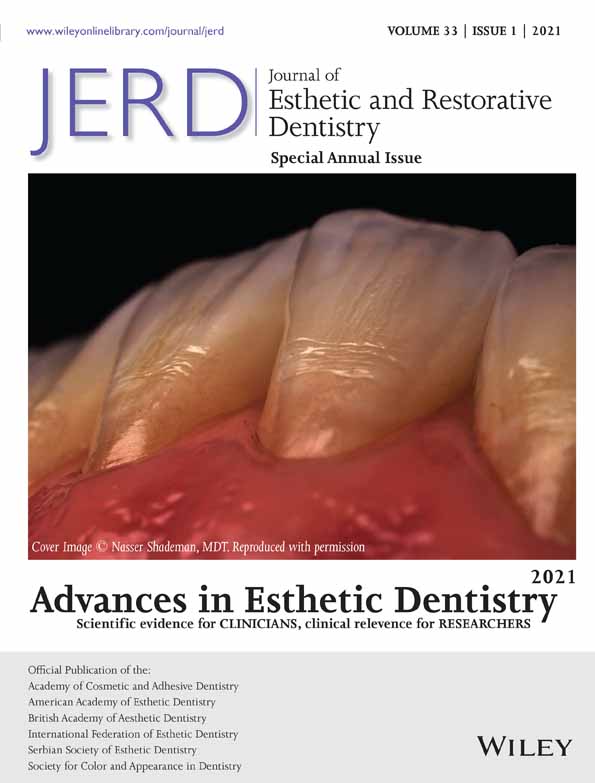2D and 3D patient's representation of simulated restorative esthetic outcomes using different computer-aided design software programs
Abstract
Objective
To review the techniques and available 2D and 3D computer-aided design (CAD) software programs to perform a diagnostic waxing for restorative procedures when cone beam computed tomography is not indicated.
Overview
An electronic review was performed in Medline, Embase, and Scopus search engines. A manual search was also conducted. The articles evaluating methods to obtain a 2D or 3D patient's representation for restorative dental procedures were included. A total of 33 articles were included for full text review. CAD programs provide the capability to integrate facial features from 2D photographs or 3D facial scans and facilitate facially driven digital diagnostic waxing procedures. Diagnostic and design tools varied among the programs, and multiple technique descriptions were found. However, the literature evaluating the accuracy of virtual patients and the perception variations between the 2D and 3D dimensional representations is limited.
Conclusions
The integration of digital technologies into treatment planning procedures introduce variation into the conventional interfaces; however, the concepts remain the same. Further studies are needed to evaluate the accuracy of the virtual representations and the influence of the type of dimensional representation on the esthetic perceptions among dental professionals.
Clinical significance
The 2D and 3D CAD software programs facilitate the integration of facial features into digital diagnostic waxing procedures; however, the esthetic perception of the patient's virtual representation might vary among the different systems.




